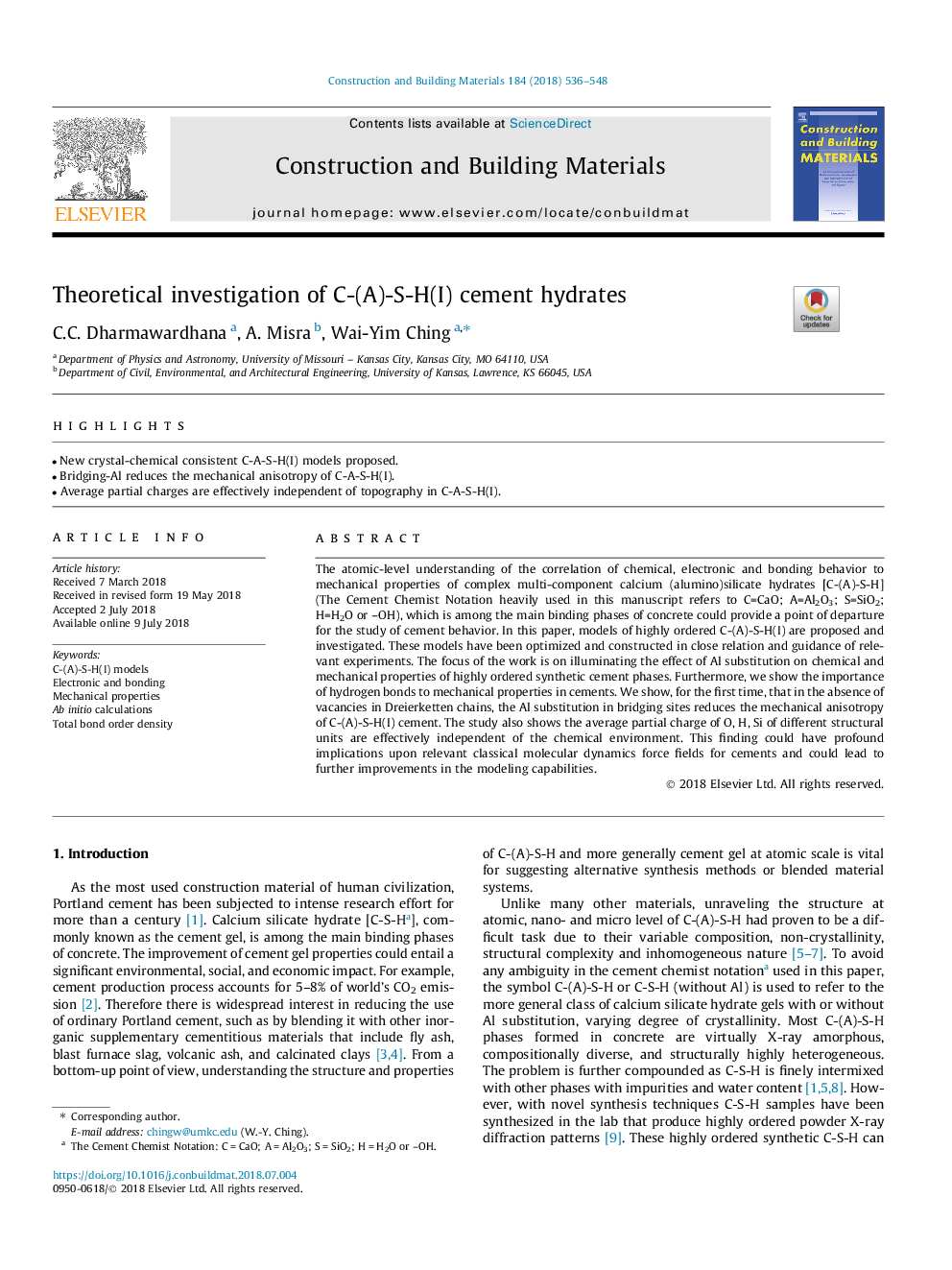| Article ID | Journal | Published Year | Pages | File Type |
|---|---|---|---|---|
| 6712164 | Construction and Building Materials | 2018 | 13 Pages |
Abstract
The atomic-level understanding of the correlation of chemical, electronic and bonding behavior to mechanical properties of complex multi-component calcium (alumino)silicate hydrates [C-(A)-S-H] (The Cement Chemist Notation heavily used in this manuscript refers to C=CaO; A=Al2O3; S=SiO2; H=H2O or -OH), which is among the main binding phases of concrete could provide a point of departure for the study of cement behavior. In this paper, models of highly ordered C-(A)-S-H(I) are proposed and investigated. These models have been optimized and constructed in close relation and guidance of relevant experiments. The focus of the work is on illuminating the effect of Al substitution on chemical and mechanical properties of highly ordered synthetic cement phases. Furthermore, we show the importance of hydrogen bonds to mechanical properties in cements. We show, for the first time, that in the absence of vacancies in Dreierketten chains, the Al substitution in bridging sites reduces the mechanical anisotropy of C-(A)-S-H(I) cement. The study also shows the average partial charge of O, H, Si of different structural units are effectively independent of the chemical environment. This finding could have profound implications upon relevant classical molecular dynamics force fields for cements and could lead to further improvements in the modeling capabilities.
Related Topics
Physical Sciences and Engineering
Engineering
Civil and Structural Engineering
Authors
C.C. Dharmawardhana, A. Misra, Wai-Yim Ching,
